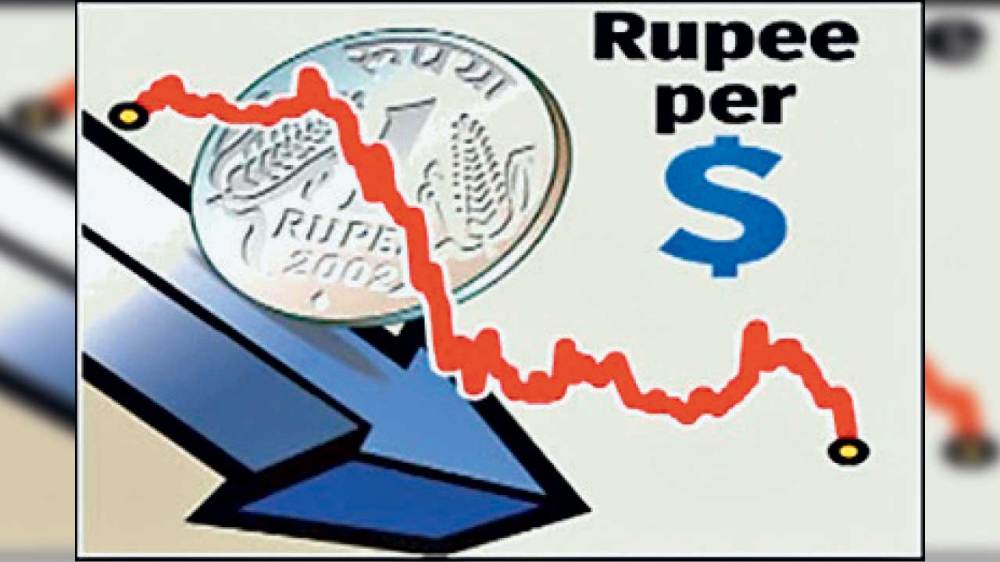
The Indian rupee is hovering near its all-time low against the dollar. This benefits exporters while imports become expensive. In such a situation, it will be interesting to see why the Indian Rupee is currently soft, what effect it has on the economy and what steps RBI is taking to maintain the value of the Rupee:
Indian rupee hits historic low against dollar in April
The Indian rupee hit a low of 83.53 against the dollar on April 16, 2024. It also touched a low of 83.57 intraday. However, after this the Reserve Bank of India intervened and stopped the fall of the rupee. Although the rupee has fallen to such low levels, the truth is that the rupee performed well against Asian currencies on April 16. Compared to the 0.10 per cent decline in the rupee, Indonesia's rupiah declined 2 per cent, Taiwan dollar 0.34 per cent, South Korea's won 0.76 per cent, Thailand's baht 0.21 per cent, Japan's yen 0.28 per cent and China's yuan 0.18 per cent. There was a decline of. However, from a medium-term perspective, the Indian rupee has depreciated by 9 percent over the past two years, a significant increase compared to the long-term trend. The value of rupee against the dollar was 76.11 in April, 2022, which has increased to 83.5 in April, 2024.
As geopolitical tensions increase, value of rupee decreases
At present there are war like situations in three places in the world. There has been a war between Russia and Ukraine for more than a year. After that the war started between Israel and Palestine and now finally a war like situation has arisen between Iran and Israel. The geopolitical tension arising from this situation has a direct adverse impact on investors and investment flows. In such a scenario, investors invest in safer options and withdraw money from risky assets like equities. Thus withdrawal of foreign investment clearly has an impact on the value of the rupee. There is a fear that due to this war the supply chain of the entire world will be disrupted. If this happens, prices of various commodities may increase. If prices increase, the inflation rate also increases. If inflation rises, the prospects for a rate cut by the US Fed are now bleak and may be delayed. If the interest rate in America is high, it encourages investors to withdraw investments from various countries including India and invest in America. Thus, as investments are withdrawn, there is an outflow of dollars from India, causing the value of the rupee to depreciate.
The biggest impact of the fall in rupee has been on the import bill of crude oil.
Devaluation of the rupee against the dollar simply means that it is beneficial for exporters, as converting dollar earnings into rupees due to exports increases their income. However, this makes imports more expensive for importers, as they have to buy dollars to pay the import bill and pay more rupees for it. Now India is a net importer of both goods and services. Therefore, if the value of rupee falls against the dollar, it will cause a big blow to the economy. India's current account deficit stood at $9.2 billion in the first half of fiscal year 2023-24. The biggest impact of the fall in the value of rupee has been on the import of crude oil, because India fulfills 85 percent of its crude oil needs through imports. As the rupee depreciates, these imports become more expensive. Apart from this, it has also had a deep impact on sectors like electronics, machinery, plastics and chemicals, which are largely dependent on imports.
If foreign investment increases, the currency will strengthen.
The value of any currency depends on the difference between demand and supply of the respective currency. The demand for a currency depends on the country's ability to attract investment. If foreign investment is high, demand for the country's currency is high. If foreign investors i.e. FDI invest in productive units or FIIs invest in the equity market, the demand increases. On the other hand, if the exports of the concerned country increase, then due to this the demand for currency also increases. When the value of the rupee falls significantly, the Reserve Bank of India limits the fall of the rupee by selling dollars from its foreign exchange reserves. Additionally, by raising interest rates, it also attracts dollar inflows, creating conditions for rising returns in India's bond market.
RBI uses forex reserves to limit fall in rupee value
India's foreign exchange reserves recently reached an all-time high of $648.56 billion in the week ending April 5. At that time, foreign exchange reserves had increased for seven consecutive weeks. After that this stock has decreased for three consecutive weeks. Since these reserves are at such high levels, the RBI has the flexibility to intervene in the foreign exchange market if the value of the rupee declines. It is said that on April 17, RBI had sold US currency worth 100 to 200 million dollars in this market. Even when war broke out between Russia and Ukraine, RBI intervened in such a way as to stop the fall of the rupee. In future also RBI may intervene in this manner to limit the fall of rupee. However, the fact remains that if the rupee is to strengthen, foreign investment inflow will come in huge quantities and exports will be taken to the highest level.
 look news india
look news india